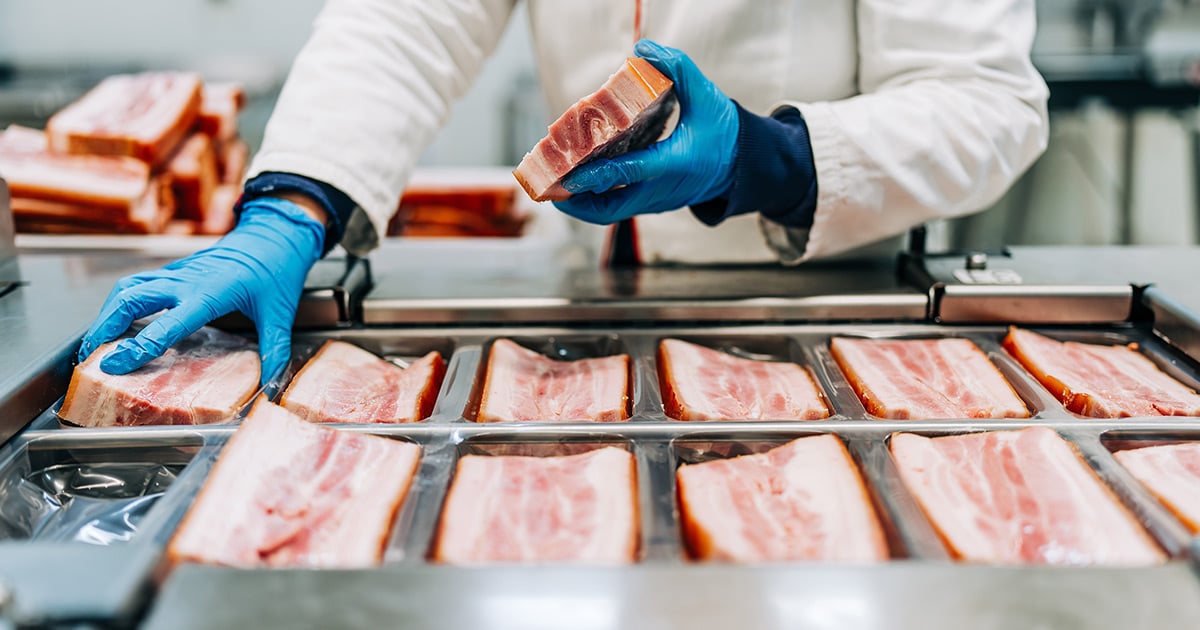9 min read
From Risk to Resilience: Future-Proofing Packaging Operations
The packaging world in North America is facing a moment of transformation. Between unpredictable global developments, shifting consumer habits, and...
3 min read
 BradyPLUS Editorial
:
December 18, 2024
BradyPLUS Editorial
:
December 18, 2024

The packaging industry is always in motion, and each year brings its own set of challenges and innovations. As we transition from 2024 to 2025, there are noticeable shifts in priorities, technology, and consumer expectations. Understanding these changes is crucial for businesses aiming to stay competitive. Here’s a comparison of the key trends from 2024 to 2025 and what’s driving these shifts.
Sustainability was a major focus, but many companies were still exploring eco-friendly solutions. Initiatives included experimenting with biodegradable materials and introducing recycling programs. While the intent was there, widespread adoption faced challenges like high costs and limited availability of sustainable materials.
Expect sustainability to mature from an initiative to a standard. Bio-based materials like mushroom packaging and agricultural byproducts are becoming mainstream, and circular packaging solutions—designed for continuous reuse or recycling—are widely implemented. Carbon impact labels on packaging are no longer a novelty but a consumer expectation. The push toward sustainability is now less about experimentation and more about execution.
The Difference: The leap from experimentation to implementation marks 2025’s sustainability efforts. What was once aspirational is now non-negotiable, driven by consumer demand and tighter regulations.
Automation and robotics began gaining traction, with businesses adopting solutions like robotic arms for repetitive tasks and automated quality control systems. However, these systems often require significant upfront investment and customization to fit specific production lines.
The landscape for 2025 is defined by smarter, more adaptable automation. Collaborative robots (cobots) are more affordable and seamlessly integrate with human workers, boosting efficiency without replacing the workforce. AI-driven systems have become more sophisticated, offering real-time defect detection and predictive maintenance for equipment.
The Difference: While 2024 focused on introducing automation, 2025 emphasizes making it smarter and more accessible, enabling businesses of all sizes to benefit from advanced technology.
Personalization was a growing trend, with brands experimenting with digital printing to create custom packaging designs. QR codes began appearing more frequently, linking consumers to product details or promotions, but adoption was uneven across industries.
Personalization will become a cornerstone of branding. Advances in digital printing now make it easier to customize packaging at scale, and dynamic QR codes offer hyper-targeted content, enhancing customer engagement. Packaging is increasingly seen as an opportunity to build emotional connections with consumers.
The Difference: In 2024, personalization was a nice-to-have; in 2025, it’s an expectation. Businesses that neglect it risk losing relevance in a competitive market.
Smart packaging emerged in popularity, with industries like food and pharmaceuticals exploring temperature sensors and RFID tags for tracking. These technologies were primarily used for logistical purposes, like inventory management or quality assurance.
Smart packaging goes beyond functionality to enhance user experience. Temperature sensors and RFID tags are now paired with interactive features, like NFC-enabled packaging that communicates with devices to provide real-time updates or usage instructions. These innovations build trust by offering transparency and convenience.
The Difference: The shift from back-end logistics to front-end consumer engagement defines the evolution of smart packaging from 2024 to 2025.
Minimalist designs were gaining popularity well before 2024, with companies adopting sleek aesthetics to appeal to modern consumers. However, packaging sizes and materials were still largely influenced by traditional practices, leaving room for improvement in efficiency.
Expect minimalism to be paired with functionality. Right-sized packaging is standard, reducing material waste and optimizing shipping costs. Mono-material designs make recycling simpler for consumers, aligning with sustainability goals.
The Difference: While 2024 leaned on aesthetics, 2025 focuses on combining style with practicality to deliver a more sustainable and efficient experience.
E-commerce growth from 2020-2024 drove demand for durable and lightweight packaging, but many solutions were still in development. Easy-open designs and packaging for returns were gaining traction but weren’t yet industry norms.
E-commerce packaging will likely be more refined. Innovations like dual-purpose designs for shipping and returns have become standard, and lightweight materials are optimized for cost-effective, secure transit. The focus is on creating a seamless customer experience from doorstep to return.
The Difference: E-commerce packaging has evolved from reactive to proactive, with solutions that more effectively anticipate and address customer needs.
The evolution from 2024 to 2025 highlights a dynamic shift in the packaging industry. Sustainability has moved from ambition to execution, automation has become smarter and more accessible, and personalization is no longer optional. One thing remains clear as we navigate these changes: staying ahead means adapting quickly and embracing innovation.
At BradyPLUS, we’re here to help you navigate this exciting future. From cutting-edge materials to advanced packaging solutions, we have the tools and expertise to keep your business ahead of the curve. Let’s shape the future of packaging together. Contact us today ⬇️ and discover how BradyPLUS can partner with you to drive innovation and success in the ever-evolving packaging industry.

9 min read
The packaging world in North America is facing a moment of transformation. Between unpredictable global developments, shifting consumer habits, and...

11 min read
This past year has been a whirlwind of change that has shaken up the packaging industry. With new innovations in artificial intelligence and...

13 min read
In 2025, food industry packaging is experiencing a rapid transformation. This is causing food processors and foodservice operators to reevaluate how...